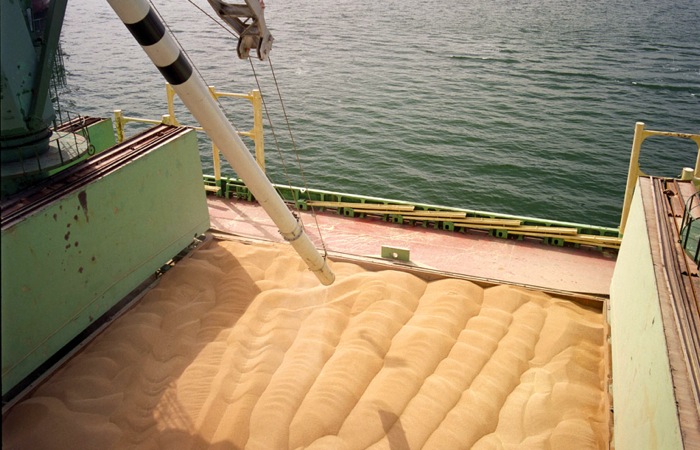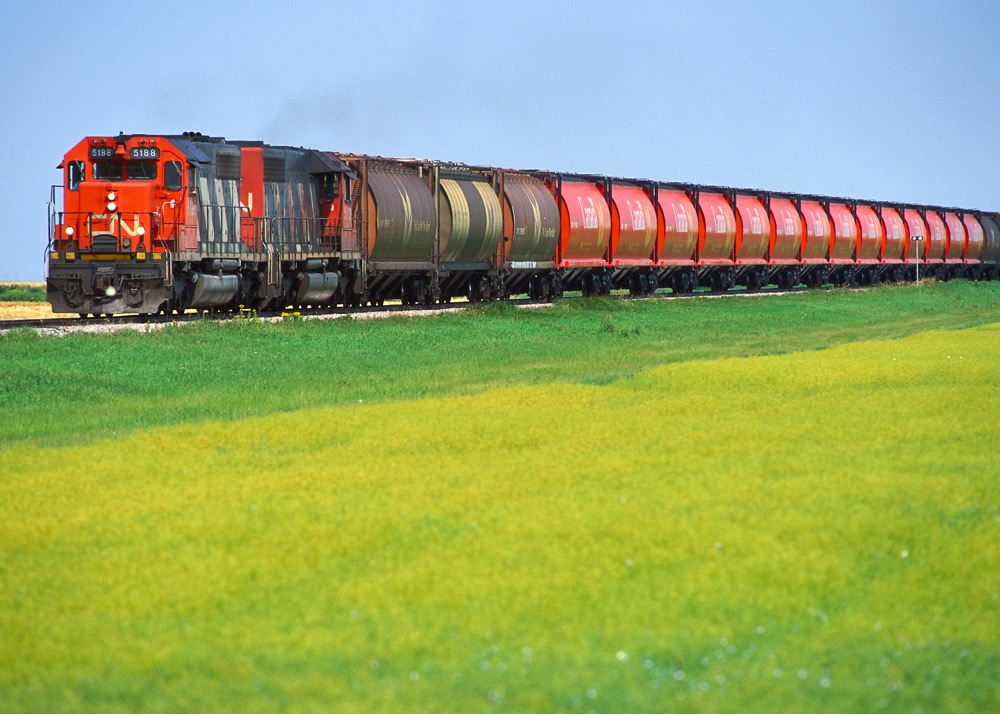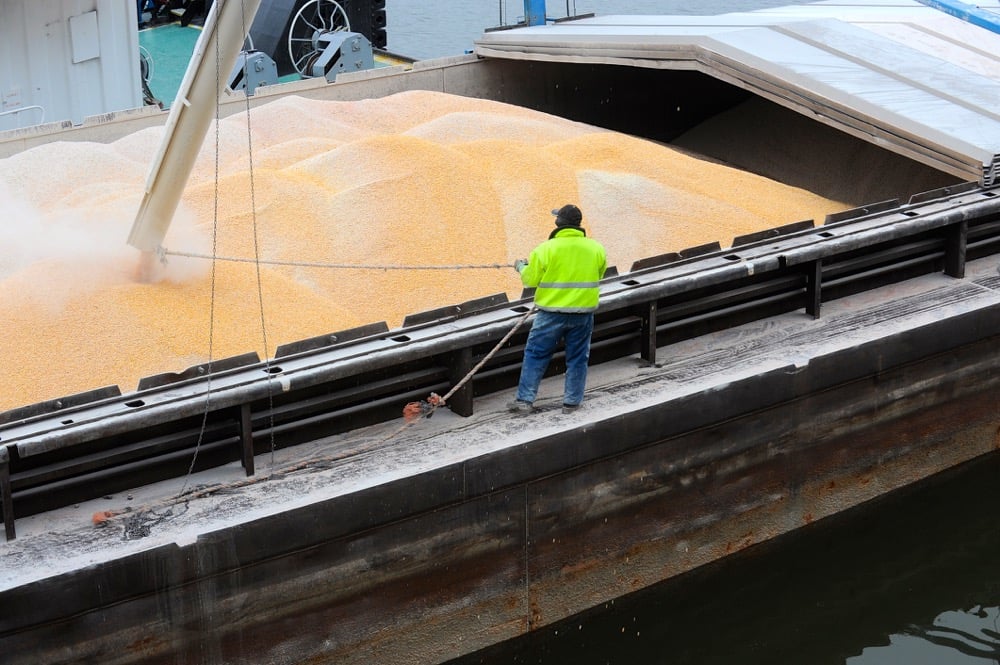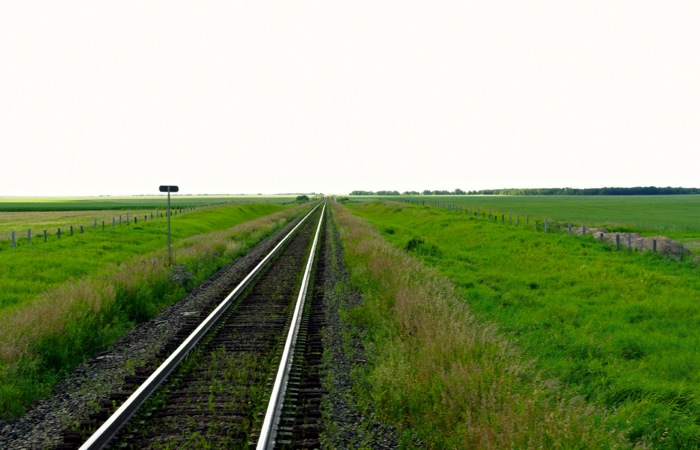Mark Hemmes is cautiously optimistic about grain transportation this year, he told CropSphere delegates in Saskatoon in January. The transportation system has set records for grain volumes moved, he said, and generally things are back in balance.
But vessel line-ups at port are still a concern, he said, especially in Vancouver.
“They’re running out of anchorage in the port,” said Hemmes, founding partner of Quorum Corporation, the agency tasked with monitoring grain movement.
In the first nine months of the 2013-14 crop year, over 13 million tonnes of grain were funnelled through Vancouver, according to Quorum’s latest report. This adds up to just over 61 per cent of the entire system’s throughput.
Read Also

Claas brings 1000 Series SP forage harvesters to Canada
In mid-August, Claas unveiled its new line of Jaguar forage harvesters at an event in Visalia, California, deep in the heart of that state’s dairy region.
During that time, vessels waited an average of 19.1 days in port at Vancouver. The third quarter saw the longest waits, at 25.1 days on average.
In an interview, Doug Mills, senior account representative for Port Metro Vancouver, said supply chain problems are putting pressure on the anchorages.
“And it causes us to deny ships entry into the anchorage and force them to anchorage off Vancouver Island, for example,” said Mills. “And that causes extra costs into the supply chain because now that vessel has to hire pilots twice. They have to move an extended distance.”
Despite anchorage issues, Port Metro Vancouver moved record grain volumes last year, Mills said. And this year, with few weather disruptions or other logistic issues, the port is on track to break more records, Mills said.
“It hasn’t been as drastic this year as it was last year,” said Gerry Gault, president of the Grain Workers Union, whose members staff the grain terminals in Vancouver and Prince Rupert.
Gault, interviewed in late January, said typical waits were 12 to 24 days at that time. He put recent line-ups at anywhere from 15 to 20 vessels.
Grain movement the crux of the problem
Quorum’s latest report notes vessel wait times indicate export movement of grain isn’t keeping up with demand. In an email, Hemmes cautioned against looking for simple solutions or causes.
But inadequate carrying capacity is part of the problem, the Quorum report notes.
“The railways have not been able to supply capacity so as to meet the demand,” Hemmes said. He added they could not have met the demand of 2013’s crop, given the unexpected size of the crop. They need at least eight to 10 months to gear up for more volume, Hemmes explained.
“That said, there has been an ongoing challenge for grain companies to obtain rail capacity and grow volumes,” Hemmes said. Canadian Pacific (CP) cut locomotives and staff in the spring and summer of 2013, when movement slowed, Hemmes said. The cold winter had an impact as well, he added.
“The actual fact of the case is, the reason those ships are there is because the grain’s not getting to port,” said Mills. “And it’s not a cause of grain back-up. It is a result of grain back-up.”
Mills said Port Metro Vancouver is undertaking a $9 billion infrastructure project to meet future export demands. But right now the port’s grain terminals have lots of capacity, he said. “Some of them were half-empty through the busiest part of the year.”
The crux of the problem is “grain arriving out of sequence and to do with the way the railways are managing the car supply and the timeliness of rail cars being spotted,” said Wade Sobkowich in an interview. Sobkowich is executive director of the Western Grain Elevators Association.
It takes “an awful lot of cars to fill a 55,000 tonne vessel,” Gault said. All the cars have to show up on time, or in advance, for a ship to be serviced, he explained.
Railways respond
Both railways provided statements regarding logistics issues at Port Metro Vancouver.
“CN is fully in sync with the grain supply chain in Western Canada, where end-to-end balance has been restored,” Mark Hallman, director of communications and public affairs for Canadian National (CN), wrote via email.
So far CN has spotted 18 per cent more hoppers this crop year than last, Hallman said. He pointed out CN set a record for grain exports in the last crop year.
“CN is also working closely with its grain customers to make sure all end market segments and corridors receive proper service,” Hallman said.
CP spokesperson Jeremy Berry wrote that “Canadian grain loading is a function of the performance of all supply chain members, and that the supply chain must operate on a 24/7 basis to support balanced pipelines, reduce congestion and drive velocity.”
The railway is “committed to working with the various supply chain stakeholders,” Berry added.
Gault said there’s a misperception that terminal elevators don’t receive cars on weekends. For the current crop year, as of January 25, grain elevators were open for 19 of the 24 weekends, he said. There were no cars the other five weekends, he added.
“Any time cars are available they’re willing to work,” Gault said, adding it’s been a very long time since grain terminals offered work and grain workers refused it.
AgCanada.com reported that CP recently appealed a $50,000 fine for missing the government-mandated weekly minimum grain volumes in the second week of September 2014.
The missed target was because of supply chain issues, “specifically the Labour Day holiday shutdown at the Port of Vancouver the week before,” said Martin Cej, assistant vice-president for public affairs for CP.
Gault said Labour Day is one of five days a year the Port of Vancouver shuts down.
“Traditionally we’ve never worked the Labour Day because they can’t ship vessels on a Labour Day either, because Longshore has traditionally held that as their one shut-down day a year… in recognition of international solidarity,” said Gault.
Most of the other shut-down days have been in place since 1997, he said. Easter Sunday was added to the list in 2003, he added. The other shut-down days include Christmas day, Boxing Day and New Year’s Day.
The end of the single desk
Hemmes doesn’t see the end of the Canadian Wheat Board (CWB) monopoly in 2012 as part of the problem. The jump in vessel time started two years before the single desk’s elimination, he said. He noted two years doesn’t provide much of a basis for comparison. But so far the numbers show the single desk’s end hasn’t affected grain flow much, if at all, through the terminals, he said.
Quorum’s 2012-2013 annual report notes the proportion of vessels needing to berth more than once dropped to 44 per cent that year. That is the lowest proportion Quorum has recorded since it began monitoring.
The report suggests grain companies were able to take advantage of efficiencies inherent in making larger bulk shipments. They also had total logistical control from country elevators to export terminals, the report notes. But this also meant more reliance on “just-in-time inventory management practices and a larger proportion of vessels loading in a single berthing,” the annual report notes.
“Needless to say, this also placed a heavier burden on the railways if the fluidity of this system was to be maintained,” the report states.
Gault said coordinating vessels and rails seems to be the most difficult thing since the CWB’s single desk ended.
“The marketing aspect of the Wheat Board the companies seem to have managed fairly well. But the logistics of making sure the vessels are not tied up for days and weeks at a time is horrendous,” he said.
Sobkowich said that grain companies now manage their entire pipeline for all the commodities they handle, which makes for a more streamlined logistics system.
“So it has more to do with the sequencing of the grain, which is more of a rail service issue, than it has to do with the Canadian Wheat Board,” said Sobkowich.
Mills said the larger companies have a fair bit of experience in logistics. “But it is a different reality.”
Instead of having one body handling all logistics, there are separate logistics supply chains all trying to work within two railways, Mills said. “Where there may have been grain shared between terminals in order to fill a boat’s consignment, that now has to be, just by the virtue of this new reality, those boats are being filled by one terminal. So there are logistics issues that occur at the outset because of that.”
Mills said he thinks those issues are being overcome, and cited record grain volumes moving through the port as evidence.
“So you have to say there’s an efficiency that’s occurring. Whether or not it’s necessarily part of what happened with the Wheat Board or not, it’s a fact,” said Mills.
Changes coming at port
The port authority is bringing in regulations to mitigate anchorage problems; grain issues are impacting other supply chains.
The measures would be designed to change the behaviour of those hiring ships, in many cases, grain companies, Mills said. The Port Authority is wary of unintended consequences, such as fines being passed along to farmers, and is still in consultation. They’re aiming for a draft of a new regulation in 2015.
Measures might include levying penalties for overusing an anchorage, limiting anchorage time, restricting anchorage access, or rewarding companies that operate within the regulation. “We’re looking to change the behaviour. The mechanism that we use, we haven’t landed on yet,” Mills said.
Some companies have been problematic at times in the last couple of years, Mills said. “And I would say there are companies as well that have been very good.”
















